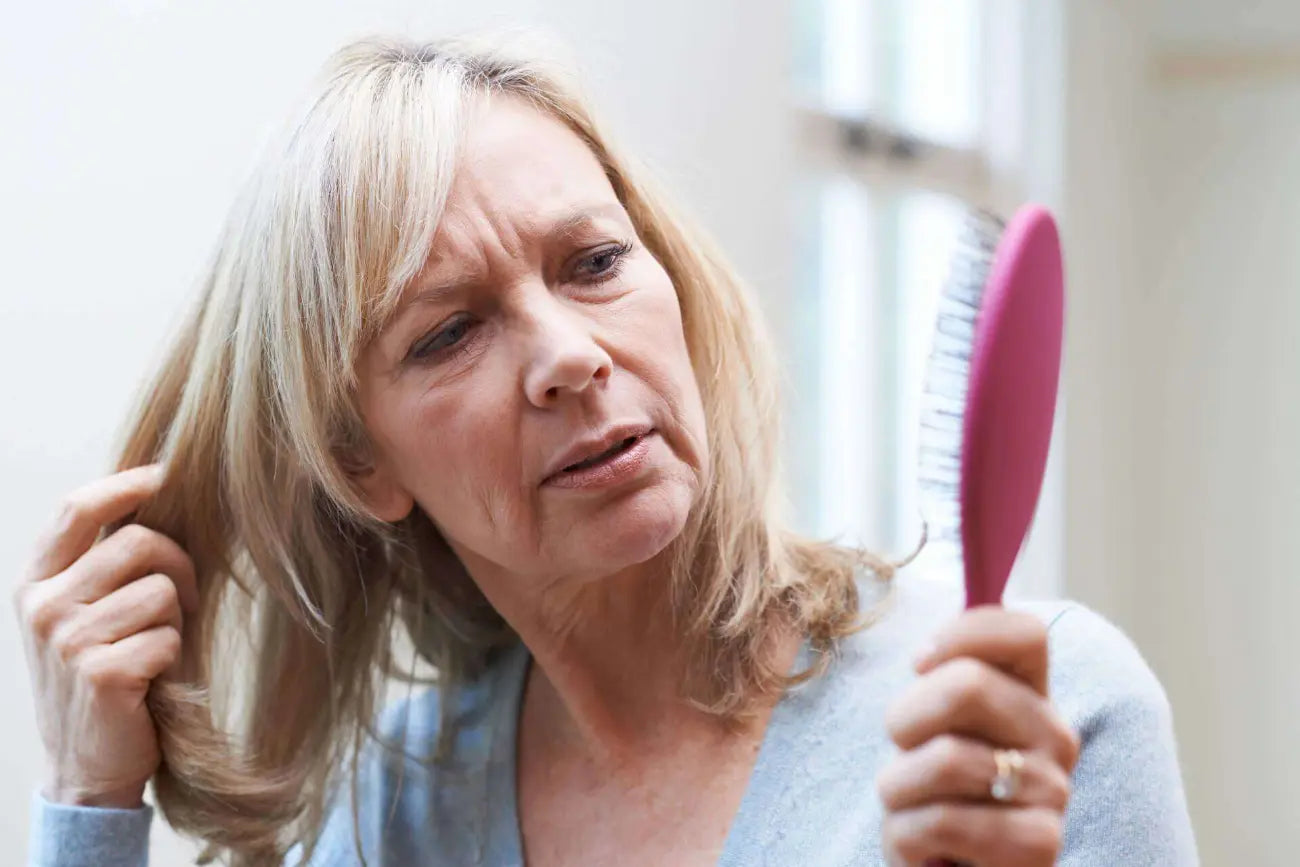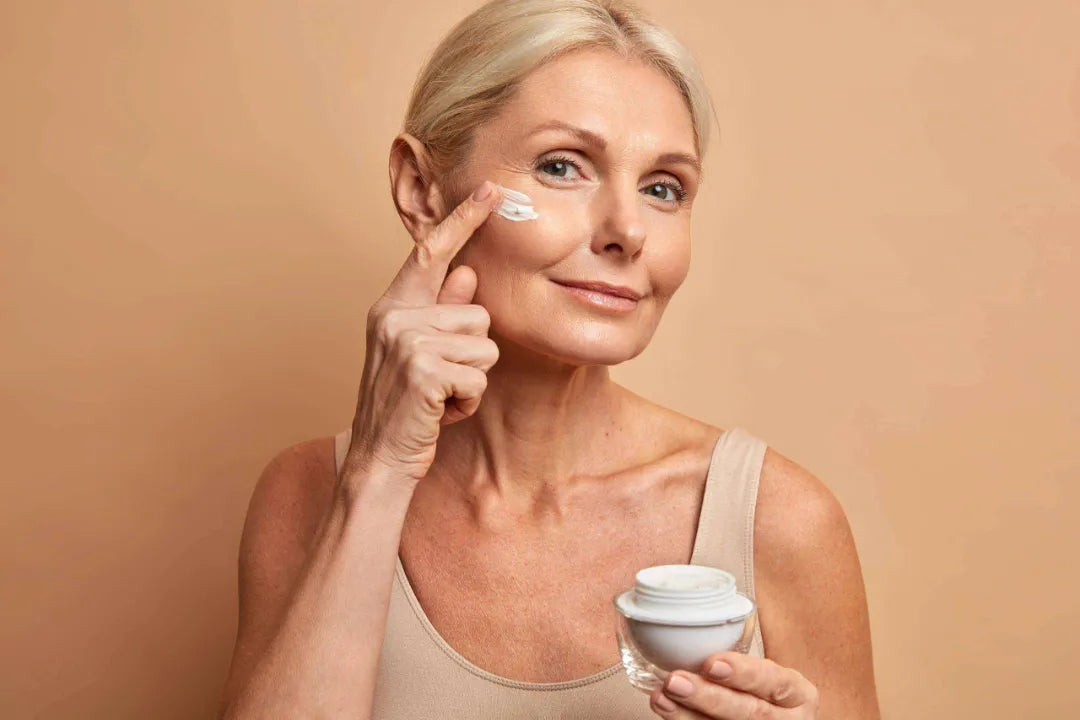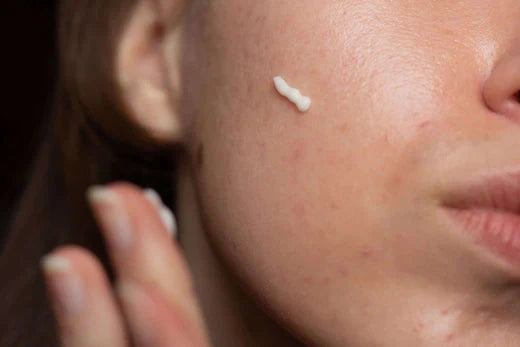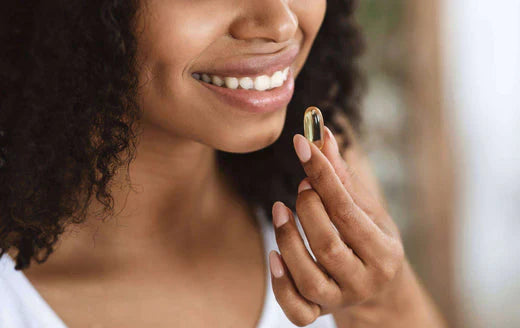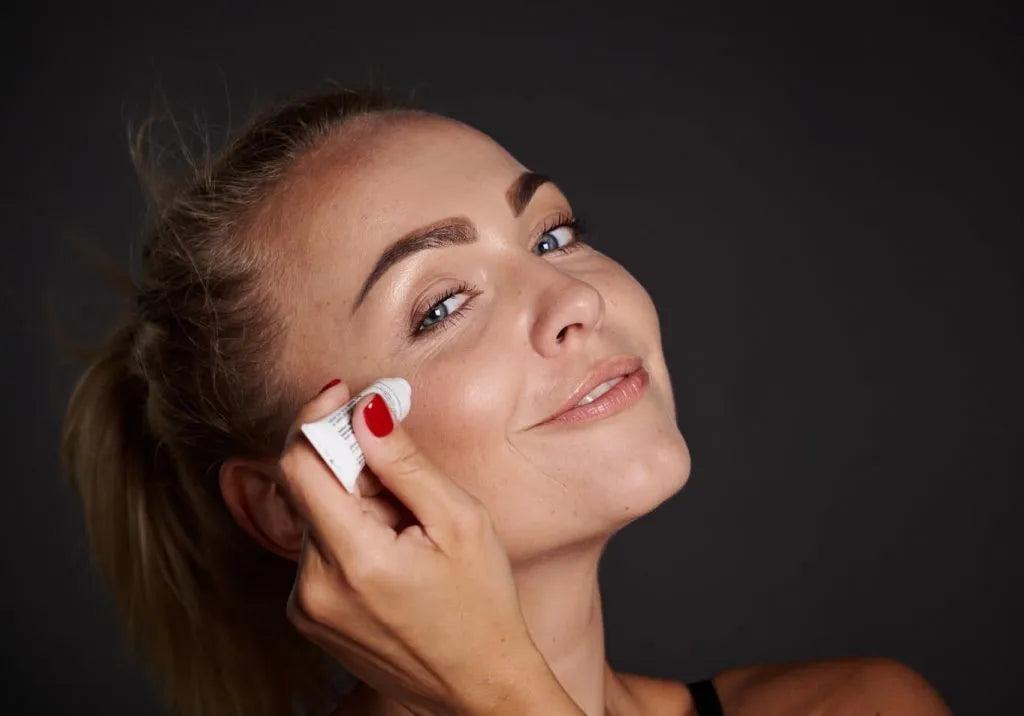Have you noticed that your losing a lot of hair when you brush? Well, one of the most frequent problems when reaching menopause is hair loss. This situation can appear from perimenopause and affects up to two-thirds of women during this stage due to hormonal imbalance. Generally, the growth phase is shortened and there is less hair, it becomes thinner and finer. In addition, there is a progressive thinning of the hair and increased visibility of the scalp (NAMS, 2021). These changes are normal and a common side effect of aging. These changes are due to hormonal imbalances during the menopause. Hair loss during the menopause is usually characterised by hair thinning all over the scalp. Learn why menopause predisposes you to hair loss and some tips to prevent it from happening.
What is the cause of hair loss?
At this point, you'll probably want to know what's causing the problem. Hair loss during the transition to and at menopause is usually a direct result of hormonal imbalance. Two hormones involved in hair growth are affected at this stage: estrogen and testosterone. As female hormones (estrogen) decrease, male hormones (androgens) increase, so one of them, testosterone, becomes dominant (Menopause Now, 2020). With higher testosterone levels, hair follicles shrink in size and go dormant earlier than normal, causing new hair to become thinner. Not only that but also the texture of hair changes, it becomes weaker and more brittle, and loses its shine and pigment, resulting in grey hair. It also has less volume and density. All this fragility ends up making it easier for hair to fall out (Menopause Now, 2020).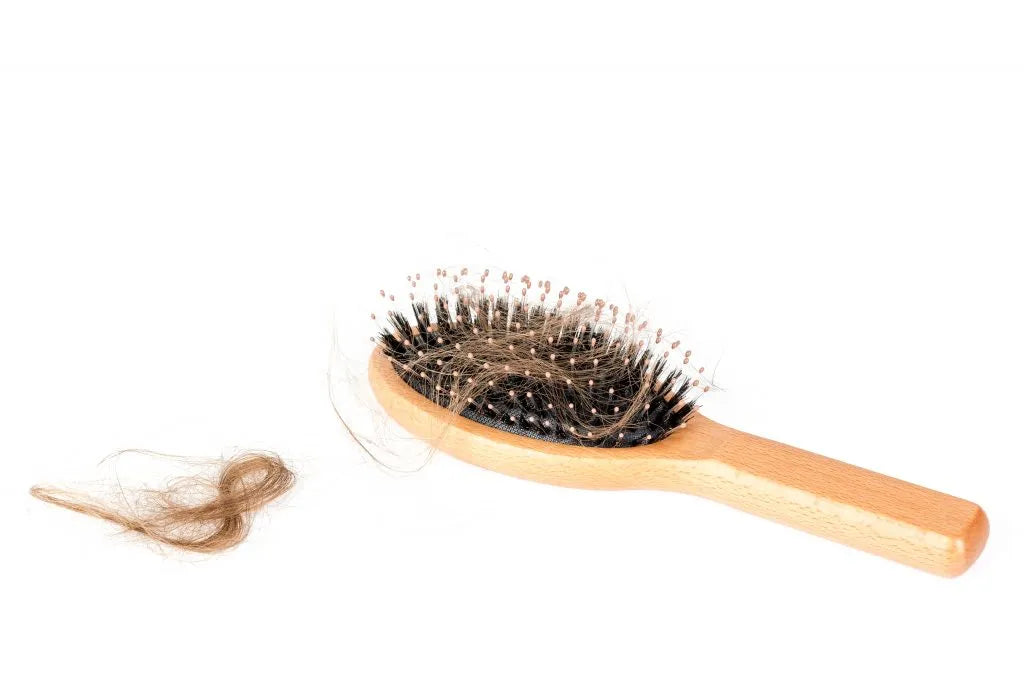
Tips to prevent hair loss
Stopping progressive thinning and hair loss during menopause is possible with certain measures and adjustments to your lifestyle. These are the basic care steps that are key to promoting hair health. Here are six tips to help you (Menopause Now, 2020; Cappelloni, 2019; Instituto de la Menopausia, n.d.):
1. Maintain a healthy diet
A good diet is essential for a healthy body. But did you know that it is also important for your hair? Maintaining a balanced diet rich in protein and essential fatty acids can help alleviate and prevent hair loss. In addition, you should increase your intake of fruit, vegetables, whole grains, nuts, salmon, and tuna. These foods have nutrients that maintain hair fibre (Mejor con Salud, 2014).
2. Take vitamin & mineral supplements
You must eat a variety of foods to get the vitamins and nutrients your body (and hair) needs. A clear example is B vitamins, which are found in eggs and meats. Another important vitamin is vitamin C, which is found in oranges and broccoli. You can even get vitamin E from foods such as soybean and corn vegetable oils and almonds. In the latter case, they are useful for healthy hair, as they increase levels of keratin, a basic hair protein. These act as antioxidants and protect against damage to the hair's protein structure. There is also another vitamin to consider: vitamin A. This vitamin is present in fruits and vegetables such as carrots, lettuce, spinach, mango, among others, and increases cell regeneration. Vitamin A can help keep hair from breaking and keep it hydrated. Also, minerals such as iron, magnesium, calcium, and zinc improve hair texture (Mejor con Salud, 2014).
3. Manage your stress levels
Do you notice that you lose more hair when you're stressed? Controlling your stress levels prevents further hormonal imbalance and with it, lower estrogen production. Low estrogen levels affect brain chemistry and cause mood swings, anxiety, and depression. These symptoms can accelerate hair loss. It is advisable to exercise and practice relaxation activities such as yoga or meditation to help manage your stress levels.
4. Maintain good hydration
Water also influences the condition and overall health of your hair. Maintaining good hydration in your body prevents hair thinning. Increase your intake of water and healthy liquids to keep your hair hydrated and strong. It also promotes circulation and oxygenation of the roots. Avoid juices, soft drinks, and other beverages with high sugar content that can weaken the hair.
5. Use natural products to stimulate hair growth
Of course, you can also use natural products for your hair. Herbal supplements such as soy, black cohosh, or maca work as natural hormone regulators. Also, red clover and hops contain antioxidants that comprehensively improve blood lipid profile and bone metabolism. They are supplements that can help stop hair loss and promote hair health. These alternative solutions nourish your scalp and promote hair growth.
6. Choose the right shampoo & conditioner for your hair
Are you using the right products to care for your hair? Choosing the right haircare can help prevent hair loss. If you colour your hair, select a natural colour without artificial chemicals. Also, use nourishing shampoo and conditioner to keep your scalp healthy. You can opt for those that include rosemary oil, aloe vera, green tea, millet extract, and biotin. These products nourish your hair and increase its volume and shine. During menopause, hair loss is a very common symptom that appears due to hormonal imbalance. To avoid its progress or prevent it from occurring, it is important to follow tips such as improving your diet, consuming the right nutrients for your hair, and using products that stimulate natural growth.
Treatment to prevent hair loss
There are some effective treatments for hair loss. These can prevent it or at least slow it down with medication, therapies, and better quality of life, always together with medical advice. Medical treatments are not suitable for everyone, as each of them has specific indications. Possible treatments include (NAMS, 2021; NIH, 2017):
- Daily application of topical minoxidil 5% for at least three months before results are noticed. It promotes hair growth and decreases the rate of the problem.
- Finasteride, a 5-reductase inhibitor that helps new hair growth. The FDA approved it for hair loss in men but may be effective in women, although at higher doses.
- Other oral medications to stimulate hair growth such as spironolactone and oral dutasteride.
- Platelet-rich plasma injection therapies. This helps regenerate tissues, improving circulation in the scalp and prolonging hair health and hair growth.
- Laser therapy. The use of ultraviolet laser has a positive effect that improves hair size and if done continuously can maintain growth.
- Better quality of life. Having healthy habits can reduce stress levels, anxiety, and depression. This helps prevent hair loss and maintain scalp health.
Worried hair loss is not normal
Are you worried your hair loss is not normal? On average women lose 50 to 100 hairs per day, which are constantly regenerated. However, at menopause hair loss can increase. Some signs will indicate when hair loss is no longer normal, and you should seek medical attention. These are (Menopause Now, 2020; Instituto de la Menopausia, n.d.):
- Scalp pain or itching.
- Red, scaly skin on the scalp.
- Sudden and excessive hair loss before the age of 45.
- Hair loss in an atypical pattern such as in patches or clumps when combing or washing.
- Alopecia areata, in which the immune system attacks the hair follicles. Alopecia areata is a condition that causes round patches of hair loss and can lead to total baldness.
Hair loss can start to appear in perimenopause due to the normal hormonal changes and fluctuations typical of the menopause. To prevent this, you should practice healthy habits such as a balanced diet, stress management, good hydration, to take care of your hair health. Use natural products to stimulate hair growth and choose the right hair care to nourish and strengthen your hair.
References
- Cappelloni, L. (2019, April 1). Menopause Hair Loss Prevention. Healthline. https://www.healthline.com/health/menopause/hair-loss Instituto de la Menopausia. (n.d.). ¿Qué pasa con el cabello en la menopausia? https://www.institutodelamenopausia.com/divulgacion/consejos/belleza-y-peso/que-pasa-con-el-cabello-en-la-menopausia
- Menopause Now. (2020, November 26). Caída de cabello. https://www.menopausenow.com/es/caida-de-cabello
- National Institutes of Health (NIH). (2017, August 28). Alopecia areata. https://www.ncbi.nlm.nih.gov/pmc/articles/PMC5573125/
- Mejor con Salud. (2014, December 19). 7 alimentos para prevenir la perdida de cabello. https://mejorconsalud.as.com/7-alimentos-para-prevenir-la-perdida-de-cabello/
- The North American Menopause Society. (NAMS). (2021, September 22). New Therapies Offer Hope for Minimizing Hair Loss in Midlife Women. https://www.menopause.org/docs/default-source/press-release/hair-loss-in-midlife-women.pdf Last edited: 9th May 2022
You May Also Like

JOIN US AND GET 10% OFF
Sign up to our newsletter to access free resources, advice and support.



